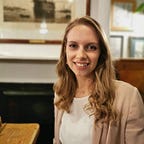Picture a scientist
In each of us another woman or young girl might see a reflection of herself; of her worth, of her boundless potential. Tessa Thompson
Trigger warning: Sexual harassment
While aspiring to be a scientist, it never really occurred to me that I might face problems with discrimination or sexual harassment. I think it’s important to know but no one really sits you down to explain it. It’s usually after something happens. I’m much more weary now about things like being alone in a computer lab or where I will go alone. I don’t feel afraid as a student at university but it’s definitely a consideration that’s in the back of my mind. Such is the unseen burden. And since I’m white, it’s only half the burden compared to that of a woman of colour.
I was wracking my brain to think if our environmental science health and safety induction mentioned anything about sexual harassment, so I went back to check. It didn’t. I think it should always be stated in the beginning that there are systems in place to protect women, saying who can be trusted and talked to, to take away stigma and as a heads up for men. I think it would also put the issues on the table for a few of men on my course to assure them that, yes, these things really do happen.
I, and I’m sure others, have talked to men who would never dream of such things happening, but have no awareness of what is going on. They think simply that it doesn’t have anything to do with them. To this I say, you are complicit in your silence. It is only with effort from everyone that systemic problems can be challenged and changed.
Of course, I am white and privileged because of it. I can never fully understand the burden racism places on people of colour but I’m glad Picture a Scientist explores this, because sexism and racism are equally important and its the women experiencing both that have it the hardest. White women have a lot of work to do as co-conspirators of the women of colour in science and beyond.
I take my hat off to these amazing, brilliant women, Nancy Hopkins, Ph.D., Raychelle Burks, Ph.D. and Jane Willenbring, Ph.D., for not only doing their jobs well but also being a powerful force, in order to change things for other women. Even if they didn’t want to have to.
There’s something about hearing the experiences of other women, as well as reflecting back on things that have happened throughout my life. The slapped ass in a crowd, the wolf whistle in the street, the pushy ones who won’t take no for an answer. And then there’s the things you would actually consider reporting. All the unseen, unheard moments. I feel a sort of collective trauma as a woman. It wasn’t me forced into smaller labs, being abused on a remote research trip or being questioned about my legitimate place like the women in Picture a Scientist, but it could’ve been. I share their pain. This is a burden that has been carried on the shoulders of women for generations, and it’s heavy. But it becomes lighter knowing the strength of women, such as those in Picture a Scientist. To know we stand together. Push for progress together. Succeed together. That makes me beam to be a woman and a scientist.
